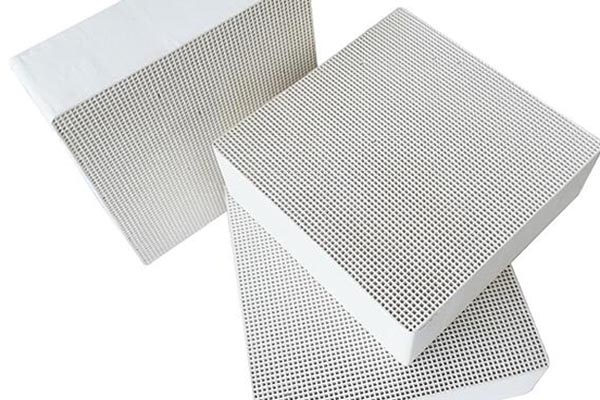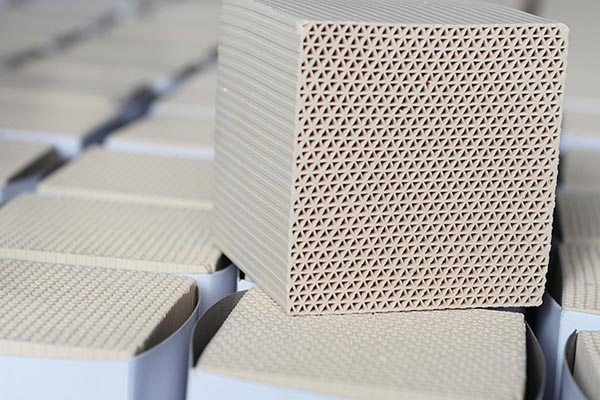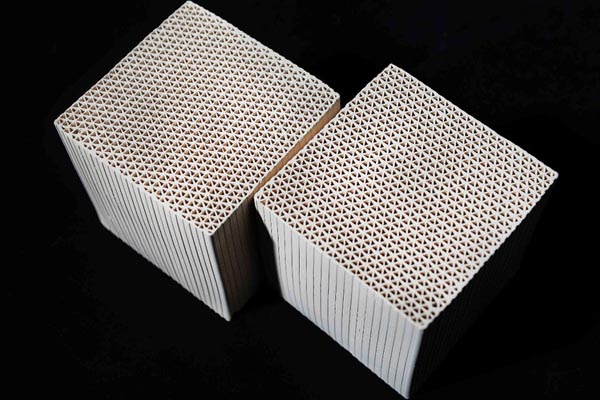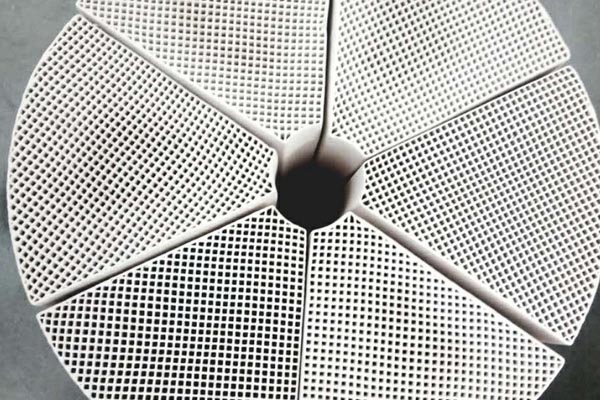
Honeycomb zeolite molecular sieve high quality The operation is stable, and the exhaust gas concentration can reach the standard stably; High temperature desorption can be adopted, with high regeneration efficiency and high safety; Honeycomb zeolite is used as the adsorption carrier, with small resistance; Compact structure, small floor area of the whole equipment. Honeycomb zeolite molecular sieve Hebei It has a wide range of applications and is suitable for treating various organic waste gases. Technical indicators of molecular sieve: the main material of honeycomb zeolite adsorbent is natural zeolite, and the zeolite manufacturer is mainly composed of silica Inorganic microporous material composed of al_2o_3 and alkaline metal or alkaline earth metal, with inner pore volume accounting for 40-50% of the total volume and specific surface area of 100-500 m2/g, is characterized by high temperature resistance, non flammability, good thermal stability and hydrothermal stability. It is an efficient molecular sieve carrier with good adsorption performance, no secondary pollution, and can be regenerated at high temperature. Compared with honeycomb activated carbon, its performance is about 25% of its efficiency, However, it is widely used in the fields of adsorption, separation, catalysis and environment due to its high temperature resistance and difficult ignition. It is more suitable for the treatment of organic waste gas with large air volume and low concentration.

Honeycomb zeolite molecular sieve high quality The addition of retention aids in the wet end of paper making is an important way to improve filler retention, which has been widely used in industrial production. Some studies reported that clinoptilolite (particle size 0.5-2 μ m) was used as a microparticle retention aid to compare the retention effect with silica and bentonite microparticle retention aid systems. The retention effect of clinoptilolite retention aid is equivalent to that of the silica microparticle retention aid system with the same dosage, which is far better than that of the bentonite microparticle retention aid system. And the use of zeolite as paper filler eliminates the need for additional microparticle retention aids. It is also reported that the retention rate of TiO2 nanoparticles can be significantly improved by using zeolite molecular sieves as retention aids in the preparation of photocatalytic paper. Compared with starch and cationic polymer, zeolite molecular sieve microparticle retention aids have better effects on improving the retention and drainage properties of paper stock and improving the uniformity of paper. Honeycomb zeolite molecular sieve high quality The use of zeolite particle retention aids can effectively avoid flocculation between fibers, and help to form fiber particle fiber flocculating particles. In addition, it can also support titanium dioxide nanoparticles.

The zeolite runner device is essentially a concentrator. The waste gas containing organic solvent after treatment by the runner is divided into two parts: clean air that can be discharged directly and regeneration air containing high concentration organic solvent. Honeycomb zeolite molecular sieve Hebei The clean air that can be directly discharged can enter the spray paint air conditioning ventilation system for recycling; The concentration of high concentration VOCs is about 10 times that of the VOCs before entering the system. The concentrated gas is then incinerated at high temperature through the TNV recovery thermal incineration system (or other equipment). The heat generated by incineration is respectively used to heat the drying room and the zeolite wheel desorption. The heat is fully used to achieve the effect of energy conservation and emission reduction. Technical performance and characteristics: simple structure, convenient maintenance and long service life; High absorption and desorption efficiency, so that VOCss waste gas with high air volume and low concentration can be converted into low air volume and high concentration waste gas, reducing the cost of back-end final treatment equipment; The pressure drop generated by the adsorption of VOCs by the zeolite runner is extremely low, which can greatly reduce the power consumption; The overall system adopts pre assembly and modular design, which has a small space requirement and provides a continuous and unmanned control mode; Waste gas concentrated by runner, Honeycomb zeolite molecular sieve production It can meet the national emission standards; The adsorbent uses non combustible hydrophobic zeolite, which is safer to use; The disadvantage is that the one-time investment is high.

Honeycomb zeolite molecular sieve high quality Due to its large pore size, mesoporous materials have become a good carrier for molecular reaction with large size. However, the pore wall of mesoporous materials is amorphous, so their hydrothermal stability and thermal stability cannot meet the harsh conditions required for petrochemical applications. Because there are metal ions with low electricity price and large ion radius and water in the combined state, water molecules are continuously lost after heating, but the crystal skeleton structure remains unchanged, forming many cavities with the same size. The cavities are connected by many micropores with the same diameter. These tiny holes have uniform diameters, which can adsorb molecules smaller than the diameter of the hole into the interior of the hole, By excluding molecules larger than pores, molecules with different shapes, diameters, polarities, boiling points and saturation levels can be separated, Honeycomb zeolite molecular sieve production It has the function of "screening" molecules, so it is called molecular sieve. At present, molecular sieves are widely used in metallurgy, chemical industry, electronics, petrochemical industry, natural gas and other industries.

Honeycomb zeolite molecular sieve high quality There are cavities and channels in the crystal structure of zeolite with large adsorption capacity, whose volume accounts for more than 50% of the total volume of zeolite crystals. Moreover, the micropores of zeolite are evenly distributed, and the pore size is small, which is equivalent to the molecular size of general substances. The internal surface area of zeolite crystals can reach more than 1000 square meters. Therefore, the adsorption capacity of zeolite is particularly large. The main material of honeycomb zeolite adsorbent is natural zeolite. The manufacturer of zeolite is composed of silica Inorganic microporous material composed of al_2o_3 and alkaline metal or alkaline earth metal, with inner pore volume accounting for 40-50% of the total volume and specific surface area of 100-500 m2/g, is characterized by high temperature resistance, non flammability, good thermal stability and hydrothermal stability. It is an efficient molecular sieve carrier with good adsorption performance, no secondary pollution, and can be regenerated at high temperature. Compared with honeycomb activated carbon, its performance is about 25% of its efficiency, However, it is widely used in the fields of adsorption, separation, catalysis and environment due to its high temperature resistance and difficult ignition. It is more suitable for the treatment of organic waste gas with large air volume and low concentration.




